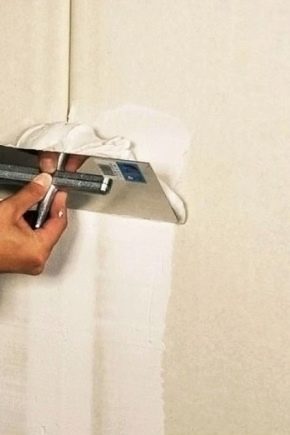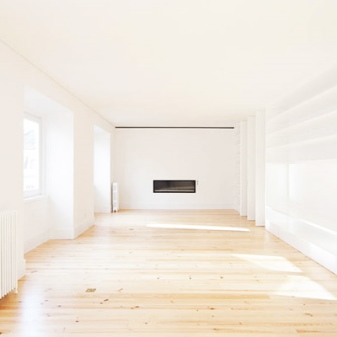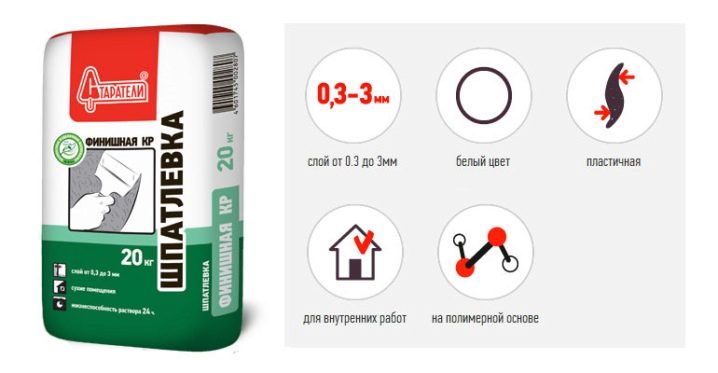Putties "Prospectors": types and their characteristics

Various mixtures for leveling surfaces make up a significant part of the building materials market. Among the best products in this category for more than a year has been called Prospectors putty from a Russian manufacturer, which successfully combines high technical characteristics with affordability and ease of use.

Peculiarities
Putty "Prospectors" is a domestic product with European quality. The recipes for the preparation of leveling compounds are based on time-tested standards combined with the latest modern developments.
Modern putties from this manufacturer have the following technical characteristics:
- working temperature - from +5 to + 30 ° С;
- consumption (with a layer thickness of 1 mm) - 1.1 kg / m2;
- batch proportion - 0.3-0.36 l / kg;
- the viability of the diluted mixture is from 1.5 to 24 hours (depending on the type of solution);
- adhesion - not less than 0.25 MPa;
- frost resistance - 30-35 cycles.
Indicators may vary slightly depending on the type of mixture, but always meet the highest requirements and standards.


The composition of putties from "Prospectors" (also depending on the type) includes:
- regular or most often white cement;
- natural fillers;
- polymeric and modifying additives;
- reinforcing fibers;
- antiseptic.


Due to their composition, the putties of this manufacturer differ:
- Plasticity. They can be easily applied in an even and thin layer to the surface of the substrate. In this case, the solutions "do not slip" and do not form roughness.
- Good adhesion to non-primed surfaces.
- Waterproof. This becomes possible due to the fact that the putty does not form pores when it dries.
- Environmentally friendly. The material is completely safe and does not emit toxins even when heated and burned.
- Versatility. It can be used both for interior decoration of premises and for leveling facade walls. It fits perfectly on substrates made of stone, wood, brick and other materials.

- Resistance to external negative factors, including natural phenomena and ultraviolet light.
- Fast drying ability. At t about 20 ° C, the putty dries no longer than a day.
Moreover, even a thick layer of material does not crack after drying and does not shrink. Thanks to this feature, it can be used to level out significant flaws and drops on the walls.
In addition, such a putty is easy to sand, after which a perfectly flat surface is obtained.
The composition is sold in strong kraft bags of 20 kg, packages of 5 kg or in plastic buckets of 7 and 15 kg. Putty in buckets - ready-made, in bags - in the form of a dry powder, which must be diluted with water according to the instructions. The shelf life of the mixture is 12 months from the date of manufacture.


Types of putty and their composition
Currently on the market there is a wide variety of putty mixtures "Prospectors", which are divided by specialists into several categories:
- basic;
- polymer;
- plaster.
There are several mix options in each category, which allows you to choose the most suitable option for each case.


Today the assortment of the "Prospectors" includes:
"Superfinishing putty"
Ready-made composition of white color, based on polymer binders and finely ground fillers (fraction up to 60 microns). Reinforcing fibers, modifying additives and antiseptic agents are used as additives.
Such a putty can be used indoors with normal humidity. It is applied to walls and shelves, covering with gypsum plaster, drywall or fiberglass.
Forms a flat surface that can be painted over or wallpaper.


"Front-finishing mixture"
Cement putty, supplemented with natural filler and all kinds of modifying additives.
Suitable for indoor and outdoor use in rooms with varying humidity with concrete and reinforced concrete surfaces. Evenly applied to plastered walls and ceilings.

Can be used for painting, decorative plaster, various types of wallpaper.
"Facade"
Consists of white cement combined with modifying additives. Has a light beige color.
White facade plaster for interior and exterior use and can level the surfaces of various concrete bases (aerated concrete, foam concrete and others), used on brickwork and cement plaster.
Has increased frost resistance - up to 50 cycles and is applied with a layer of up to 10 mm.
As a variation of this type of mixture, the company's assortment includes a gray facade putty. The latter differs exclusively in color - in all other parameters, these types of building materials are identical.


Basic white and basic gray
For the variant of the mixture, which includes cement and all kinds of chemical additives that give the putty improved characteristics.
It is used for finishing facades and interiors with any degree of humidity. Equally easily and efficiently applies to plaster, brick, concrete, reinforced concrete and cellular concrete blocks. Suitable for leveling vertical and horizontal surfaces for almost any finish.


"Finishing - fast-hardening leveling mixture"
Consisting of gypsum and modified additives. It is used in interiors with ceilings and walls made of concrete, reinforced concrete, drywall, as well as on gypsum and cement plaster.
Not suitable for rooms with high humidity.

"Finish KR"
Finely dispersed natural filler in combination with modern polymer additives allows using the putty for finishing interior walls and ceilings in rooms with normal humidity. Works best on drywall and gypsum plaster, but it can also be used on concrete and reinforced concrete substrates.

Textured and thin wallpaper or paint can be used as a finish.
"Finish Plus moisture resistant"
Polymer-cement version of the leveling mixture, which forms an even coating with a thickness of 0.3 to 3 mm. It is used both outdoors and in rooms of any degree of humidity. Provides high quality leveling of concrete and plasterboard walls and plasterboard surfaces.

"Plaster leveling"
It is used to prepare concrete, brick or plastered walls and ceilings for painting and pasting. With its help, you can easily patch up joints between gypsum boards, scratches and cracks on drywall, fill the seams of prefabricated concrete structures and elements.
In a number of putties from the company "Prospectors" there is a ready-made composition based on PVA in packages of 15 kg. This composition is suitable for any surfaces preparing for pasting or painting. Can only be used in indoor dry rooms.


Preparation and application technique
Before puttingty the base, it must be thoroughly dried and prepared. You should not even try to put putty on old paint or wallpaper - such repairs will not last long.In order for everything to be done efficiently and without unnecessary losses (both time and money), it is necessary to strip off all the old finish. After that, the base is cleaned of dirt, dust and degreased. Walls and ceilings made of highly absorbent materials must be additionally primed.
No matter how high-quality the leveling mixtures are, the final quality of work depends on the correct preparation and application of them. The main rule here is to observe the precise proportions indicated by the manufacturer and the kneading technique.



Professionals recommend diluting the formulations in cylindrical plastic containers with a smooth inner surface (buckets are well suited for this purpose). It will be easy to wash such a container before diluting the next portion of putty in it.
Small amounts of leveling mortar can be mixed by hand. However, using a mixer will be much more efficient. Especially when it comes to large volumes, which can hardly be mixed without special equipment.
When kneading, the dry mixture is poured into the water, but not vice versa!
The amount of solution should be calculated based on the amount of work that the repairman will have time to complete in an hour and a half.

Important! The putty must be kneaded twice. The first time it is stirred when the dry mixture is poured into the water. It is necessary to mix everything so that all dry lumps are well wet. After that, the composition is left for 3-5 minutes, and then mixed again.
Another important point is the application technique. This is especially true for beginners who have no experience with putty mixtures.
Everything will be much easier if you adhere to certain rules:
- In the work, it is necessary to use two spatulas, one for a set of mixture, the other for the main work on the distribution of the putty. A narrow tool 80-100 mm wide is used to capture the composition from the container. As for the wide spatula, its size should correspond to the area of the putty surface.
- In order for the mixture to lay down as evenly as possible, it is necessary to choose the right combination of the thickness of the putty, the angle of inclination of the working tool and the pressing force.


- Most putty mixtures are applied in two layers. In this case, the second is put only after the first has dried. At normal humidity, the drying process takes up to 24 hours. Before re-applying the putty, the surface should be re-primed.
After all the work is completed, it is necessary to grind the walls (ceiling) and you can proceed with the finishing.
Reviews
The high quality of the putty mixtures from the Prospector company is evidenced by numerous positive reviews of professional builders and those who, without building skills, made repairs on their own.

Buyers note the optimal combination of price and quality. This is very important, given that in addition to the putty for repair, it is necessary to purchase a large number of various building materials. In addition, professionals note that when the powders are diluted with water, they do not form dry lumps, cement particles are not felt in them and do not interfere with the creation of even coatings.
Those who undertake repairs for the first time prefer ready-made putties and note their easy application, which makes it possible to significantly reduce the time for repair work.
In this video you will find a master class on the cultivation of the "Prospectors" putty.













The comment was sent successfully.